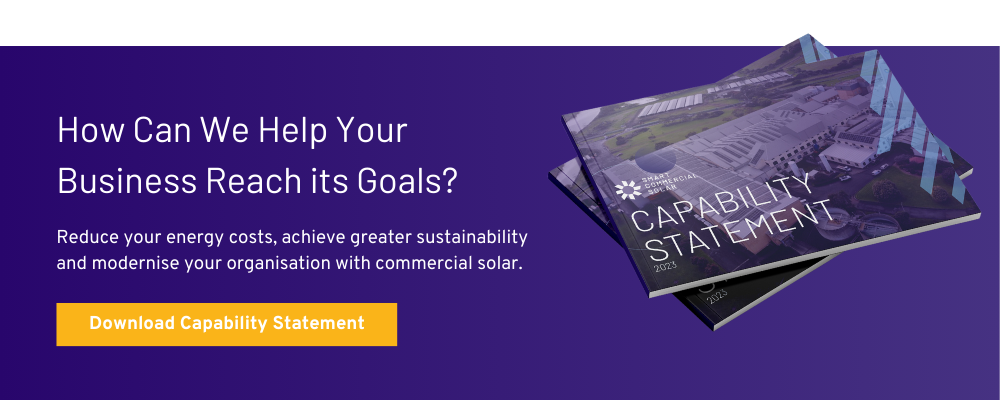VEECs – or Victorian Energy Efficiency Certificates - can be complex and unwieldy as a concept, but they play a crucial role in the Victorian Energy Upgrade Program. For commercial organisations, breaking through that complexity is critical for achieving better financial outcomes from their renewable energy investments.
We sat down with National Business Development Manager, James Duckworth, to better understand the program and understand how businesses can benefit from VEECs.
What are VEECs?
VEECs are created under the Victorian Energy Upgrade Program, and are administered by the Essential Services Commission of Victoria. These certificates are generated through accredited agents and trading companies, using a baseline regression analysis of a site's energy consumption over a 24-month period. This analysis helps estimate the carbon reduction resulting from the installation of a solar system.
What is the difference between a VEEC and STC?
STC stands for Small-Scale Technology Certificates and is for systems of 100 kilowatts or less. VEECs, on the other hand, are more economically viable for solar systems of 100 kilowatts or greater. VEECs and STCs differ in terms of their applicability and the costs associated with them.
What is the difference between VEECs and LGCs?
VEECs are energy efficiency certificates, while LGCs are generation certificates. This means that with VEECs, you can report a 30% reduction in carbon emissions immediately, whereas with LGCs, you can only report these reductions after 2030 if you take payment for the certificates. VEECs offer more flexibility in terms of reporting carbon emission reductions.
How does a business go about claiming VEECs?
To claim VEECs, a business needs to provide a baseline of energy consumption data, usually spanning one to two years. This includes production records for businesses. Once this data is gathered, clients can approach accredited agents or trading companies to build a model, which is then submitted to the Essential Services Commission for approval. Only after approval can work on a VEECs project commence.
What are the eligibility criteria for VEECs?
VEECs are typically claimed for systems that achieve a minimum of 10% energy reduction. Going below this threshold makes it challenging to model the savings effectively. As I mentioned before, VEECs are more economically viable for systems greater than 100 kilowatts and significantly more so for systems exceeding 200 kilowatts. Businesses cannot claim VEECs themselves but can engage accredited agents to assist in the process.
Can an existing solar array claim VEECs?
No, VEECs can only be claimed for systems that have received approval from the Essential Services Commission and have not commenced construction. Retroactively applying for VEECs for an existing system is not possible.
What are the risks of VEECs?
Like LGCs, VEEC prices fluctuate due to market conditions. However, VEECs provide a level of risk mitigation by not requiring annual payments until 2030. Businesses can hedge VEEC prices, locking them at the current spot price, typically at a cost of $3.50 per certificate. This helps provide stability in a fluctuating market.
The Financial and Environmental Benefits of VEECs
For businesses that can claim VEECs, they represent a compelling opportunity to bolster their sustainability initiatives and bottom line. The VEEC rebate is typically paid around 18 months after the completion of a project, giving the Essential Services Commission time to conduct a 12-month validation period of site consumption data. Once the validation aligns with the original forecast, it takes an extra six months for the rebate to be paid out.
This differs from Large-Scale Generation Certificates (LGCs), which are paid annually until 2030. VEECs therefore provide a more significant capital contribution at the 18-month mark, which is favourable for businesses.
In summary, VEECs, or Victorian Energy Efficiency Certificates, play a pivotal role in the Victorian Energy Upgrade Program, especially for commercial entities with solar systems exceeding 100 kilowatts in capacity. By following a payment schedule that aligns favourably with businesses' financial interests, VEECs provide a great option for businesses looking to offset their solar expenditure in Victoria.
Watch james ducksworth explain veecs




